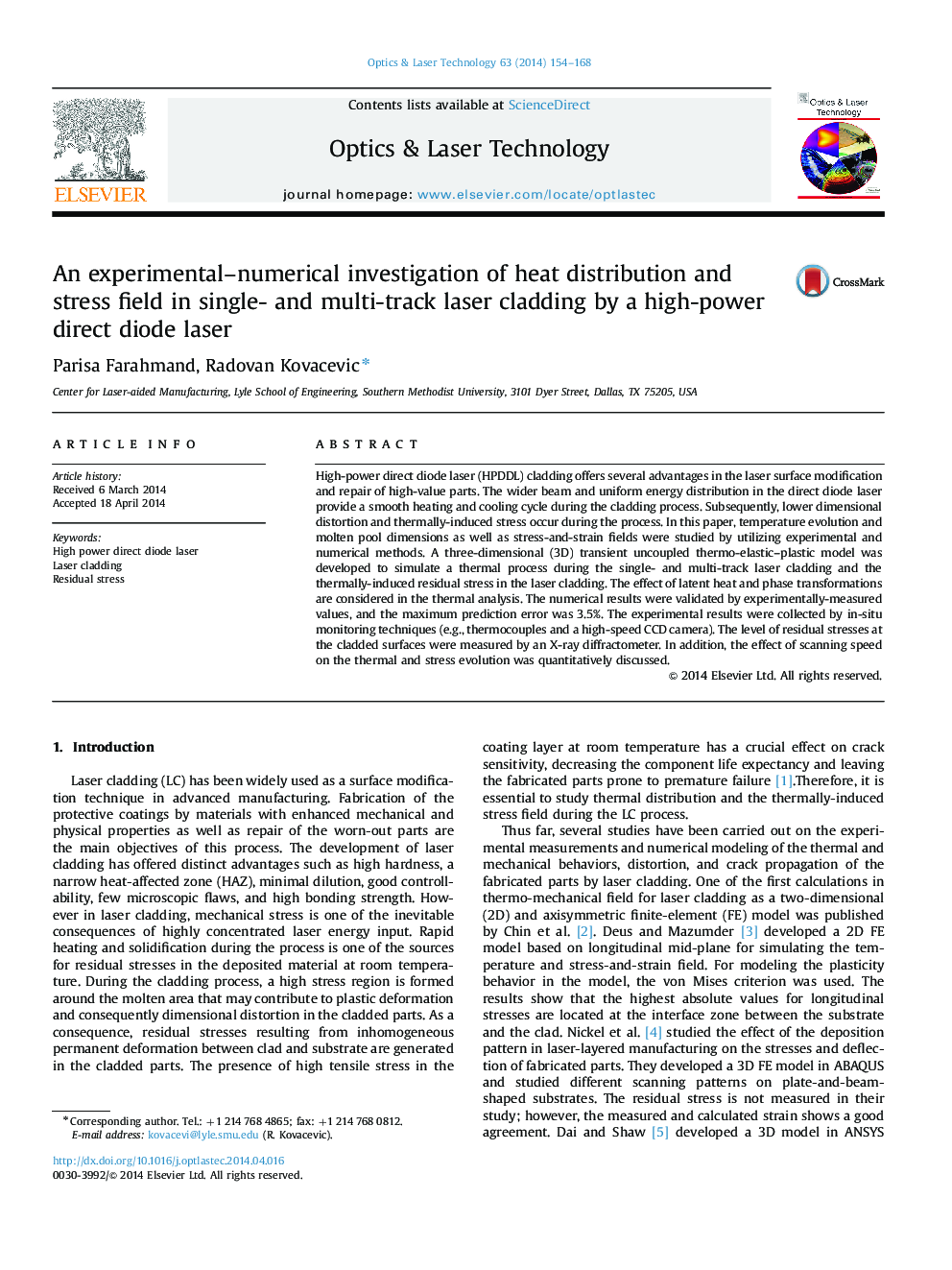| کد مقاله | کد نشریه | سال انتشار | مقاله انگلیسی | نسخه تمام متن |
|---|---|---|---|---|
| 739245 | 1461635 | 2014 | 15 صفحه PDF | دانلود رایگان |
• A numerical model was developed to simulate the laser cladding process.
• The heat transfer, stress filed, and molten pool configuration were investigated.
• The effects of process parameters on residual stress filed were studied.
• The in situ- monitoring techniques were used to validate the numerical results.
High-power direct diode laser (HPDDL) cladding offers several advantages in the laser surface modification and repair of high-value parts. The wider beam and uniform energy distribution in the direct diode laser provide a smooth heating and cooling cycle during the cladding process. Subsequently, lower dimensional distortion and thermally-induced stress occur during the process. In this paper, temperature evolution and molten pool dimensions as well as stress-and-strain fields were studied by utilizing experimental and numerical methods. A three-dimensional (3D) transient uncoupled thermo-elastic–plastic model was developed to simulate a thermal process during the single- and multi-track laser cladding and the thermally-induced residual stress in the laser cladding. The effect of latent heat and phase transformations are considered in the thermal analysis. The numerical results were validated by experimentally-measured values, and the maximum prediction error was 3.5%. The experimental results were collected by in-situ monitoring techniques (e.g., thermocouples and a high-speed CCD camera). The level of residual stresses at the cladded surfaces were measured by an X-ray diffractometer. In addition, the effect of scanning speed on the thermal and stress evolution was quantitatively discussed.
Journal: Optics & Laser Technology - Volume 63, November 2014, Pages 154–168
